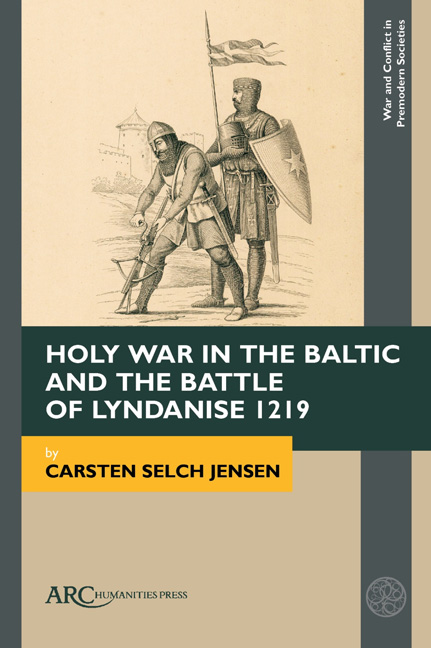Book contents
- Frontmatter
- Contents
- List of Illustrations
- Acknowledgments
- Introduction. Holy War in the Baltic and the Battle of Lyndanise 1219
- Chapter 1 Foreign Shores—Foreign People: The Medieval Baltic and its People
- Chapter 2 Fighting God’s War: Papal Crusading Politics in the Baltic from the Early 1100s until the Early 1200s
- Chapter 3 A Society Organized for War: Denmark at the Beginning of the Thirteenth Century
- Chapter 4 Competing Powers: The German Mission in Livonia and the Initial Quest for Estonia
- Chapter 5 Waging War in the Wilderness: Western Military Traditions Meet Baltic Traditions
- Chapter 6 The Danish Expedition to Estonia in 1219 and the Battle of Lyndanise
- Chapter 7 Conquering Hearts and Minds: The Aftermath of the Battle
- Conclusion A Penny in the Box: How Estonia Came to Save Denmark
- Select Bibliography
- Index
Chapter 1 - Foreign Shores—Foreign People: The Medieval Baltic and its People
Published online by Cambridge University Press: 08 May 2024
- Frontmatter
- Contents
- List of Illustrations
- Acknowledgments
- Introduction. Holy War in the Baltic and the Battle of Lyndanise 1219
- Chapter 1 Foreign Shores—Foreign People: The Medieval Baltic and its People
- Chapter 2 Fighting God’s War: Papal Crusading Politics in the Baltic from the Early 1100s until the Early 1200s
- Chapter 3 A Society Organized for War: Denmark at the Beginning of the Thirteenth Century
- Chapter 4 Competing Powers: The German Mission in Livonia and the Initial Quest for Estonia
- Chapter 5 Waging War in the Wilderness: Western Military Traditions Meet Baltic Traditions
- Chapter 6 The Danish Expedition to Estonia in 1219 and the Battle of Lyndanise
- Chapter 7 Conquering Hearts and Minds: The Aftermath of the Battle
- Conclusion A Penny in the Box: How Estonia Came to Save Denmark
- Select Bibliography
- Index
Summary
WHEN NEW WAVES of Western merchants and missionaries and eventually cru-saders came to the Baltic lands in the later part of the twelfth and early part of the thirteenth centuries they did not come to a region devoid of people—on the contrary. Already during the early medieval period Scandinavians in particular had visited these lands regularly on their way to the prosperous markets of Kyivan Rus’ and the even more prosperous markets of far-away Constantinople and Baghdad. These adventures brought great wealth to the Scandinavian lands and also played a significant role in the founding of several princedoms along the major riverways in modern-day Ukraine and Russia. While some of the Scandinavian merchants and warriors would settle down permanently in these foreign lands, many more simply visited, journeying to and from the local markets and trading posts on an annual basis. On these journeys, travellers also visited the coastal regions of Estonia, Livonia, and Curonia (Latvian: Kurzeme), each having their own important markets and trading hubs as contact points between the East and the West. Such local places also became convenient over winter when travelling became too difficult or outright impossible due to the harsh weather in the eastern parts of the Baltic Sea region. In this way, important bonds were forged between the visitors and the locals.
In the later part of the twelfth century, the local Baltic markets were still important steppingstones in a regional commercial network tying the West to the East and vice versa. Western merchants would do business with Estonians, Livonians, Letgallians, Semgallians, Curonians, Lithuanians, and of course, with people from the Rus’ princi-palities of Novgorod, Pskov, Jersika, and Polotsk bordering the Baltic lands. They met on an annual basis, each having their own cultural and religious traditions through which they turned the entire region into a sort of “middle ground” between an Orthodox East, a Catholic West, and a conglomerate of (mostly still) pagan people in the middle. Through-out the centuries, strong local and regional powers each sought to expand their domi-nance into this important region.
- Type
- Chapter
- Information
- Publisher: Amsterdam University PressPrint publication year: 2024

